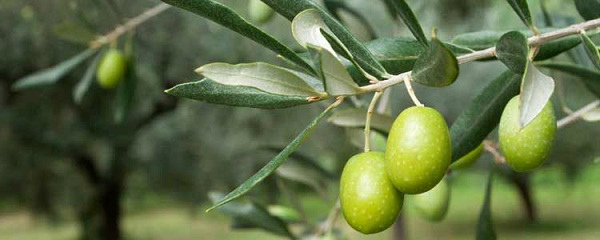
This is the biggest questions facing the olive oil consumer. When you are in a supermarket looking at 50 different brands or at an olive mill expecting to buy the real thing, how do you know you are not being taken for a ride?
Well, there is no 100% guarantee you won’t be, for reasons I will explain, but having a better idea of what to look for will certainly increase your chances of buying the real deal : Extra Virgin Olive Oil, anything else is a waste of money.
Firstly many readers have asked if it is better to buy directly from the mill or the “Almazara” as we would say in Spanish. The answer will always be yes, but you must know your Almazara and know when to buy. The olive oil season starts in October and ends around January depending on the type of oil that will be harvested, hight quality Extra Virgin Olive Oil tends to be harvested between October and November. This is the best period to visit your mill as the fresher it is the better it is. Let’s not forget that olive oil is essentially a fruit juice as it is the only edible oil that has no chemical manipulation (when it is authentic!). However there are mills and there are mills. Just as there are honest people and crooked people. You are more likely to get the authentic product from a small local mill than a very large one and I highly recommmend that you go along and ask them for a tour, especially during the production season. If the mill is receiving the olives and checking them before being washed that is the first step. A responsible mill producing extra virgin will not accept olives picked up from the ground, you may wonder how do they know that? Well it is very obvious as they are soft and wrinkled i.e. too ripe. These should be rejected straight away. The olives should then be separated from the leaves and twigs and then washed. If this is being done correctly you have probably found a decent mill. Next the olive will be crushed within a maximum of 24 hours (the shorter the time the better but being realistic the minimum time is 12 hours) and put in a centrifuge that separates the oil from the pulp, the water and the stone paste. Your chances with a smaller mill are better because they will more than likely sell all of their harvest every year. One needs to have in mind that Spain produces an enormous quantity of olive oil, so much so that it allows large manufacturers to store stock from one year to the next in their olive oil bank. Although there is nothing really wrong with it from a health point of view its organoleptic qualities are obviously not the same. If the harvest has been smaller from one year to next this oil will be used to boost up supply, so you are not getting the fresh olive oil that you were looking for by going to a mill directly. Word of advice, get to know your mill and taste the oil before you buy it. If they are serious they will be really happy you have shown an interest, as most mills I have seen take pride in their work.
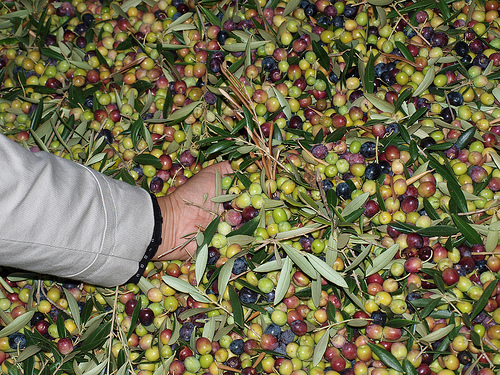
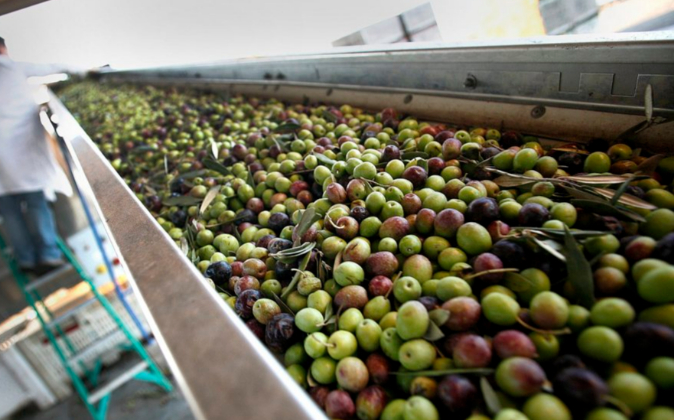
However most people can’t get to a mill, so how do you identify a good olive oil on the supermarket shelf? The first sign is the packaging. Firstly, avoid any large international household brand or white labels in any format of packaging, the volumes they manage are so large they can not maintain the level of quality one should be looking for and they often buy olives from different countries so they are open to being conned as well. Also many italian brands have been tested in the United States and only 1 out of 5 samples proved to fall into the parameters of Extra Virgin chemically and taste wise many would say none of them. Unfortunately this problem is not just in the States, but all across Europe too.
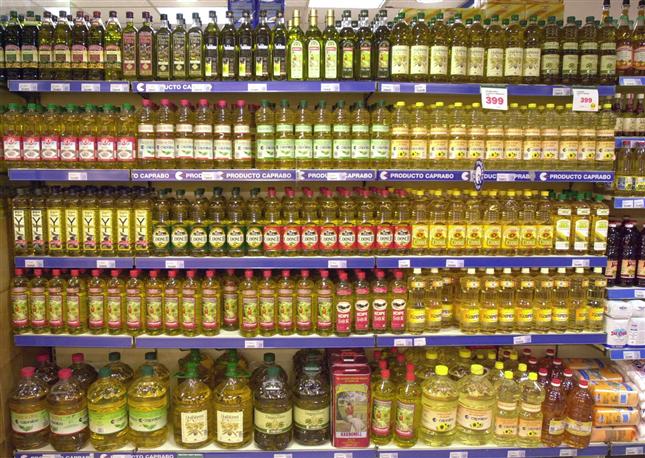
Please remember that any brand that cares the slightest about its quality of olive oil will never use plastic bottles or transparent glass (unless it is packaged in a gift box protecting it's contents). If the oil is packaged in either one of these, walk straight pass it, unless price is your only concern and taste isn’t an issue either. Transparent packaging is olive oil’s worst enemy and plastics are just sinful as it affects the taste very quickly. The light speeds up the oxidation process and I don’t just mean natural sunlight, any light will affect it. The chances are if it was extra virgin when it was packaged by the time it’s on your kitchen table it will definitely have oxidised far more than necessary due to poor storage in deposits and may even be rancid or have no organoleptic properties worth tasting as you don't know how long it has been exposed to light. This packaging is a perfect excuse for the brands to defend poor quality products "it must have oxidised due to poor storage conditions”. So why do they use transparent packaging? So you can see the colour.
It has been proven that people are influenced by the colour of olive oil before purchasing, so the brands want you to see the colour to persuade you. I have heard many people saying the greener it is the better it is. This is the biggest load of rubbish I have ever heard and there is no truth to it in the slightest. The colour of olive oil has become a science now. It has been proven that the Americans, Indians, Japanese even the Spanish prefer the colour of the greener olive oils, psychologically they think it looks more natural and earthy. This has brought on a tide of criminals into the industry who deliberately colour their olive oil to match these demands. It is the variety of olive and the pigments it carries that determine the colour of the oil. The greener it is the more chlorophyll it has and this does not affect the taste. The more mature the olive the less chlorophyll it has, as the olive turns reddish and then black. So the only indictation that the colour can give is the time it was harvested. The premium olive oils tend to be greener as they are the first olives to be harvested, but these are much more expensive as the earlier you harvest the less oil there is in the olive but the better the quality is. So many brands try to imitate this quality. It is surprisingly easy for any mill to make its oil greener than it should be; they simply leave some leaves in with the olives before crushing them. The chlorophyll from the leaves colours the oil however this also damages the oil eventually. So beware if the oil is too green, it is distinctively noticable, a good friend that advises mills around the country alerted me to the problem.
Colour is not a deciding factor when choosing olive oil, as it has no influence on the quality or flavour of the oil. I am referring to ordinary extra virgin olive oil here, not premium range olive oil, which do tend to be greener.
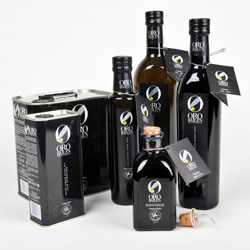 That is why olive oil tasters use blue glasses so not to be influenced by the colour of the oil when judging it. The correct packaging should be dark coloured glass or steel cans, if transparent glass is used it should be packaged in an opaque box for safe keeping. Once you have the oil at home it should be kept in a dark cool place, however it will last for say 6-8 weeks exposed to normal light (not direct sunlight) with out too many problems if the olive oil is good quality. The problem is not so much how you treat it at home (although it is recommended to keep it away from the light), as a 500ml bottle won't last you that long, but more how it has been treated up to the time when you purchase it.
That is why olive oil tasters use blue glasses so not to be influenced by the colour of the oil when judging it. The correct packaging should be dark coloured glass or steel cans, if transparent glass is used it should be packaged in an opaque box for safe keeping. Once you have the oil at home it should be kept in a dark cool place, however it will last for say 6-8 weeks exposed to normal light (not direct sunlight) with out too many problems if the olive oil is good quality. The problem is not so much how you treat it at home (although it is recommended to keep it away from the light), as a 500ml bottle won't last you that long, but more how it has been treated up to the time when you purchase it.
The next step is to then identify the information on the bottle. Obviously it must say “Extra Virgin Olive Oil” and in the ingredients table only “Extra virgin olive oil” should appear and their will be no ingredients table at all as Extra Virgin Olive Oil is itself a unique ingredient. It should also state that the contents have been produced only by mechanical means. This means no refining and no chemical treatments. You may see “first press” or “first cold press” this is the same, the cold press refers to it being pressed or more commonly now centrifuged at ambient temperature, without applying heat. This may sound obvious but Alcampo/Auchan was caught to be selling “Extra Virgin Olive Oil” as the sticker advertised but also stated in a box beside the ingredients that the oil had been refined and treated. This is illegal, very misleading and blatant fraud. They claimed it to be a mistake. The problem is that 65% of the olive oil market is white label brands and this is where there tends to be more irregularities. The sticker should also state what variety of olive has been used to make the oil. If it is a blend, all varieties should be stated. The harvest date should also be stated on the bottle, or at least the month of harvest, unfortunately this is still rare so if you don’t see a harvest date look at the “best by” date, which should be two years after the oil was bottled to give you an indication of when it was bottled. The best find is a brand that bottles on demand, although there aren’t many.
The acidity level on the bottle is disappearing more and more, as contrary to what many people think the acidity of olive oil has nothing to do with taste, when we say acidity we are not referring to acidic taste qualities but the amount of free fatty acids. Obviously the lower it is the better, the maximum allowed for Extra Virgin is 0,8%. Brands that want to make their acidity levels stand out may well put it on the bottle, anything around 0,2% or less is a very good acidity level but will not affect the taste.
Other indicators are peroxide levels, if a brand has gone to the trouble of putting these figures on the bottle it is because they generally have a quality product, however this only means that those were the levels when tested. It doesn’t mean that they are the levels you will receive. Olive oil is a “live” oil and hence deteriorates with time. However it is a guide, the maximum peroxide level allowed for olive oil is 20 milliequivalent O2, the lower it is the less oxidised it was at the time of bottling. Good figures are around 6-8 milliequivalent O2.
Although it is not a foolproof guarantee try to look for an olive oil with a “Denominación de Origin: D.O” or in English PDO: Protected Designation of Origin. These varieties are more closely controlled by local bodies to protect quality and standards. They carry a distinctive sticker on the back of the bottle stating the designated region that is being controlled. This is one from Valencia to give you an idea, but every region has its design, similar to the wine world. It isn’t a total guarantee but it’s one step closer. Blended Oils won’t carry this sticker, which doesn’t mean they aren’t great oils. This the sticker for the region of Priego de Cordoba, the Mecca of Olive Oil in Spain:
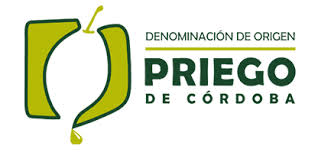
Do not be fooled into buying expensive olive oil by silly marketing tricks. However I would avoid olive oil that costs less than 8 euros a litre. When I say silly marketing tricks I mean things like 1 thousand year old olive trees or even 200-year-old olive trees. Olive trees that old produce hardly any fruit and it is no better than an olive tree which is 20 years old. The fruit is only as good as the soil and the weather that year. Age has nothing to do with it. Other funny things I’ve seen are harvesting under the moonlight, well you can imagine what I think of that!
Another question I am asked frequently is: “is it better to buy Single Estate or Cooperative olive oil?”
The answer is both can be excellent. What is the difference? Single estates tend to be smaller and have irrigation all year round meaning they maintain the ratio of oil to flesh in the olive year in, year out, making them more consistent and giving them a higher productivity of litres per 100kgs of olives and as the estates are smaller they can be more closely controlled. However this isn’t synonymous to excellent quality but is a good indication that you will get a decent olive oil. It is just another thing to take into consideration. Cooperatives also have irrigated lands, however the vast majority of olive trees in Spain are what we call “secanos”, they rely on the rain. Have in mind that just Jaen, one region in Spain makes more olive oil than all of Greece on its own and Greece is the third largest producer in the world. To irrigate this land would be extremely expensive. Fortunately, olive trees do not need much water so most years it isn’t a problem.
Finally, everyone tends to look for olive oils that have won international prizes. This is another misleading factor. Yes, many great olive oils have won prizes but very few understand how these competitions work. The vast majority only require the producer or the brand to send a maximum of 2 litres as a sample to be judged and pay an entry fee of around €150. What does this mean? It means that you can buy 2 litres of premium olive oil, bottle it under your brand, send it off, win a prize and then put the sticker on your bottle for a year. I am not saying that everyone does it, but from the people I know in the industry it is common practise. The oil presented in the competition isn’t necessarily the one that is later bottled, as there are no controlling bodies and it is all based on trust. Now if there is one industry you can’t trust, it is this one. This is one reason why many great olive oil manufacturers in Spain don’t even bother with the international competitions. I am not trying to take prestige away from any olive oil competition, of course the competitions are important and are certainly a sign of quality olive oil especially if all the other factors come into play and of course not everyone is trying to win the prize at any cost but it isn’t the be all and end all.
The only competition that is truly controlled and requires a controlled sample from a minimum 18000 litre batch is the annual olive oil competition carried out by the Spanish Ministry of Agriculture. As competitions go in terms of quality, experienced judges, batch control and sample controls, this is the Oscars of Olive Oil, hands down.
The winner can only attach the prize sticker to the batch tested and the Ministry of Agriculture controls the bottles manufactured. Only the best olive oil wins this competition so if you can find a winner of this prize or even an olive oil that has received a mention you know you are onto a winner. No other competition in the world comes close in terms of quality control and strictness.
So once you’ve taken all this into consideration, you’ve filtered out the rubbish and finally selected what you believe to be the real thing, your next step is to taste it. The chances are you will have to taste various olive oils until you find the one you like and before you really understand whether it is a great oil or a mediocre oil. Olive oil tasting isn’t that complex, but it does come down to experience. One of the quickest ways to benchmark and create safe parameters is to buy a Ministry of Agriculture Winning Sample which will carry a sticker like one of these. The first shown below is the old design. I’m showing it because some oils show this sticker from the year they won the prize on their packaging, maybe from a couple of years before....however eventhough the oil in the bottle wasn’t the winning oil the for the season in question, it is a good guarantee that the producer is responsable and trustworthy and is definitely a safe bet.
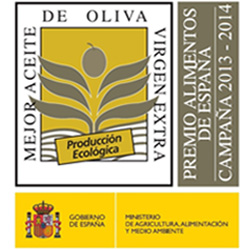

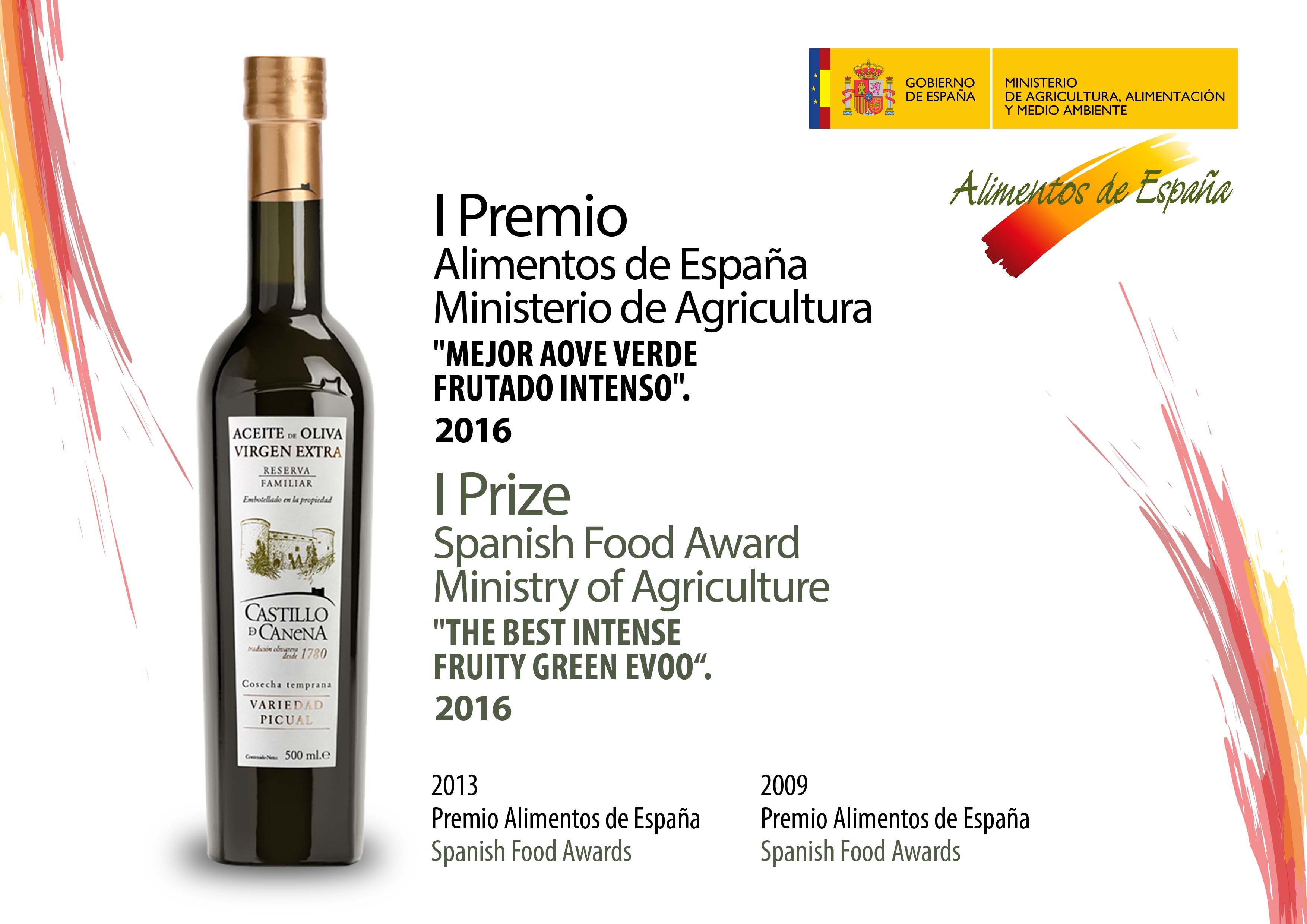
Last season's ‘Intense fruity green' winner was ‘Castillo de Canena Reserva Familiar- Variedad Picual’. However past winners such as ‘Venta Del Barón – Hojiblanca y Picudo’ or ‘Oro de Bailen Picual Reserva Familiar’ are also great oils and great benchmarks. Then, all you need to do is compare them in smell and taste to your standard supermarket extra virgin olive oil, the one you can buy for 4€ a litre in a plastic bottle. I needn’t say more. From this point on you will automatically know what to look for in terms of fruitness and flavour. If you would like to know more about olive oil tasting please read my other post .
Enjoy!